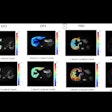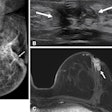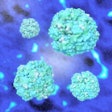MRI has revealed a link between myelination and neurodevelopmental outcomes in both term- and preterm-born children, according to a study published November 4 in Radiology.
The finding is from a comparison of MRI scans of 307 term-born children and 105 preterm-born infants and provides insights into how myelination shapes behavioral development, noted lead author Yugi Zhang, PhD, of Zhejiang University in Hangzhou, China, and colleagues.
“Our findings contribute to the understanding of both typical and abnormal development of brain myelination and underscore the potential of T1-weighted to T2-weighted signal intensity ratio as a useful marker for developmental disorders,” the group wrote.
Myelination is the process by which fatty protein coverings called myelin sheaths form a protective insulation around brain nerve cells, which allows electrical impulses to travel quickly and efficiently between one nerve cell and the next. Abnormalities in myelination during an infant's early development can lead to long-term developmental disorders, the authors explained.
Prior studies using the T1-weighted to T2-weighted (T1w/T2w) signal intensity ratio to analyze early brain development have predominantly focused on the neonatal stage, the authors added. Hence, the group used the measurement to characterize the myelination process across early childhood.
The researchers collected 3-tesla MRI data of 307 normal term-born infants with longitudinal follow-up over 72 months who underwent scans in a previous study, as well as data from 105 preterm infants aged from 0 to 8.7 months who underwent scans locally at their hospital. From these, they extracted the T1w/T2w signal intensity ratios, which provide estimates of brain myelin content.
First, they established spatiotemporal maps of normal myelination during early childhood and identified seven distinct patterns of myelination to characterize the spatiotemporal heterogeneity of the process. The investigators found that one pattern was spatially close to brain regions where myelination-mediated, age-related changes occur in two autism-related behaviors.
 Spatiotemporal maps of T1-weighted to T2-weighted signal intensity ratio (T1w/T2w) during early development (0-6 years). T1-weighted to T2-weighted signal intensity ratio maps were computed by averaging the T1-weighted to T2-weighted signal intensity ratios in all Baby Connectome Project children across discrete age intervals (3-month intervals before 2 years and 2-year intervals thereafter), incorporating both longitudinal and cross-sectional acquisitions. For each age interval, the average map is displayed in sagittal, coronal, and axial views, arranged from top to bottom, respectively. The figure illustrates the characteristic posterior-to-anterior and center-to-periphery myelination gradients. Rapid maturation of deep central structures and major white matter tracts is evident within the first 2 years, followed by more protracted development of association pathways. Warm colors denote higher T1-weighted to T2-weighted ratios, suggestive of more advanced myelination.RSNA
Spatiotemporal maps of T1-weighted to T2-weighted signal intensity ratio (T1w/T2w) during early development (0-6 years). T1-weighted to T2-weighted signal intensity ratio maps were computed by averaging the T1-weighted to T2-weighted signal intensity ratios in all Baby Connectome Project children across discrete age intervals (3-month intervals before 2 years and 2-year intervals thereafter), incorporating both longitudinal and cross-sectional acquisitions. For each age interval, the average map is displayed in sagittal, coronal, and axial views, arranged from top to bottom, respectively. The figure illustrates the characteristic posterior-to-anterior and center-to-periphery myelination gradients. Rapid maturation of deep central structures and major white matter tracts is evident within the first 2 years, followed by more protracted development of association pathways. Warm colors denote higher T1-weighted to T2-weighted ratios, suggestive of more advanced myelination.RSNA
Finally, they found that the highest rates of myelination occurred between 0.5 and 1 month of age, which indicates this is a critical period for myelin development.
“Findings from the current study provide a normative template of heterogeneous myelination patterns during early development and also underscore its critical role in shaping early brain maturation and neurodevelopmental outcomes,” the researchers wrote.
Ultimately, the study paves the way for future large-scale longitudinal research to elucidate the causal pathways between early brain maturation and long-term functional outcomes, the group concluded.
In an accompanying editorial, Elysa Widjaja, MD, PhD, a pediatric neuroradiologist at Northwestern University, noted that the study addresses a significant gap in the literature.
“Despite the importance of early postnatal brain development -- when myelination is most rapid and many psychiatric disorders are thought to originate -- longitudinal studies capturing this critical window are limited,” she wrote.
Future research should harmonize imaging protocols and functional assessments across term and preterm cohorts, which will improve our understanding of the links between myelination during critical periods of development and long-term functional outcomes, Widjaja suggested.
The full study is available here.




.fFmgij6Hin.png?auto=compress%2Cformat&fit=crop&h=100&q=70&w=100)


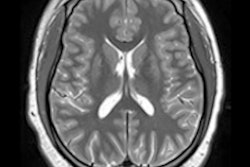
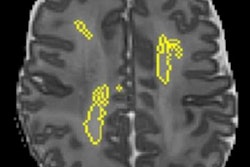
.fFmgij6Hin.png?auto=compress%2Cformat&fit=crop&h=167&q=70&w=250)




